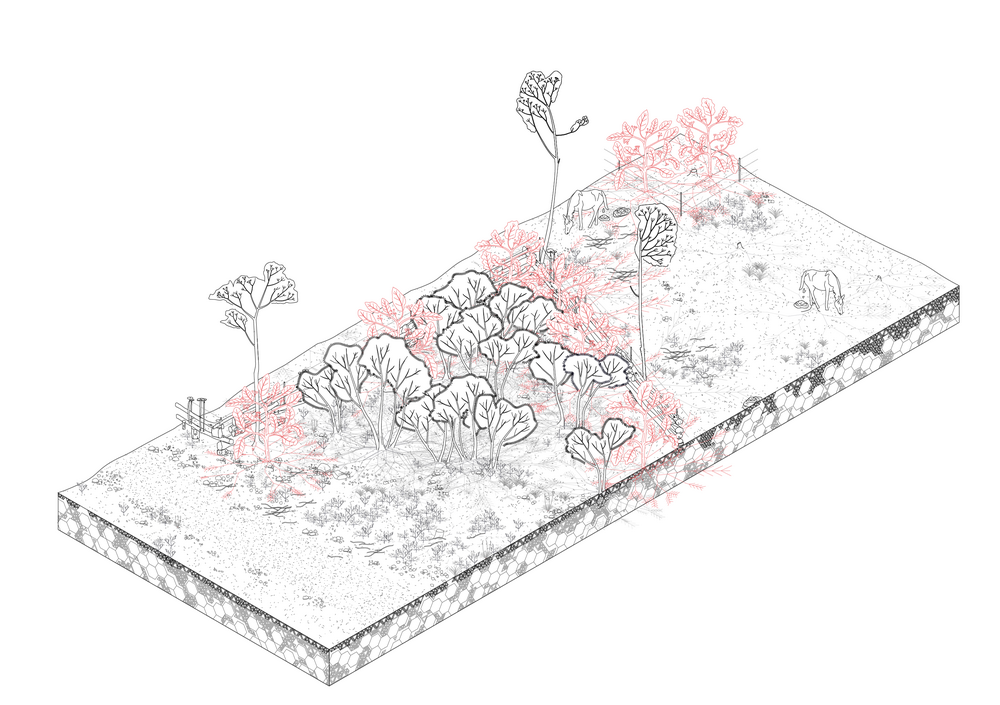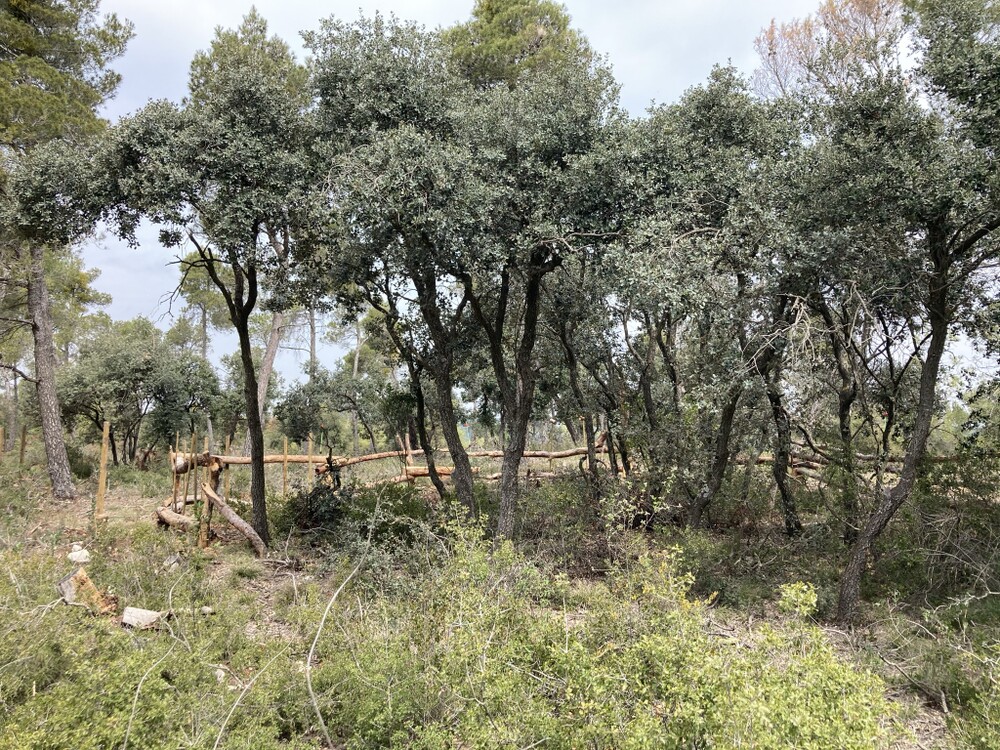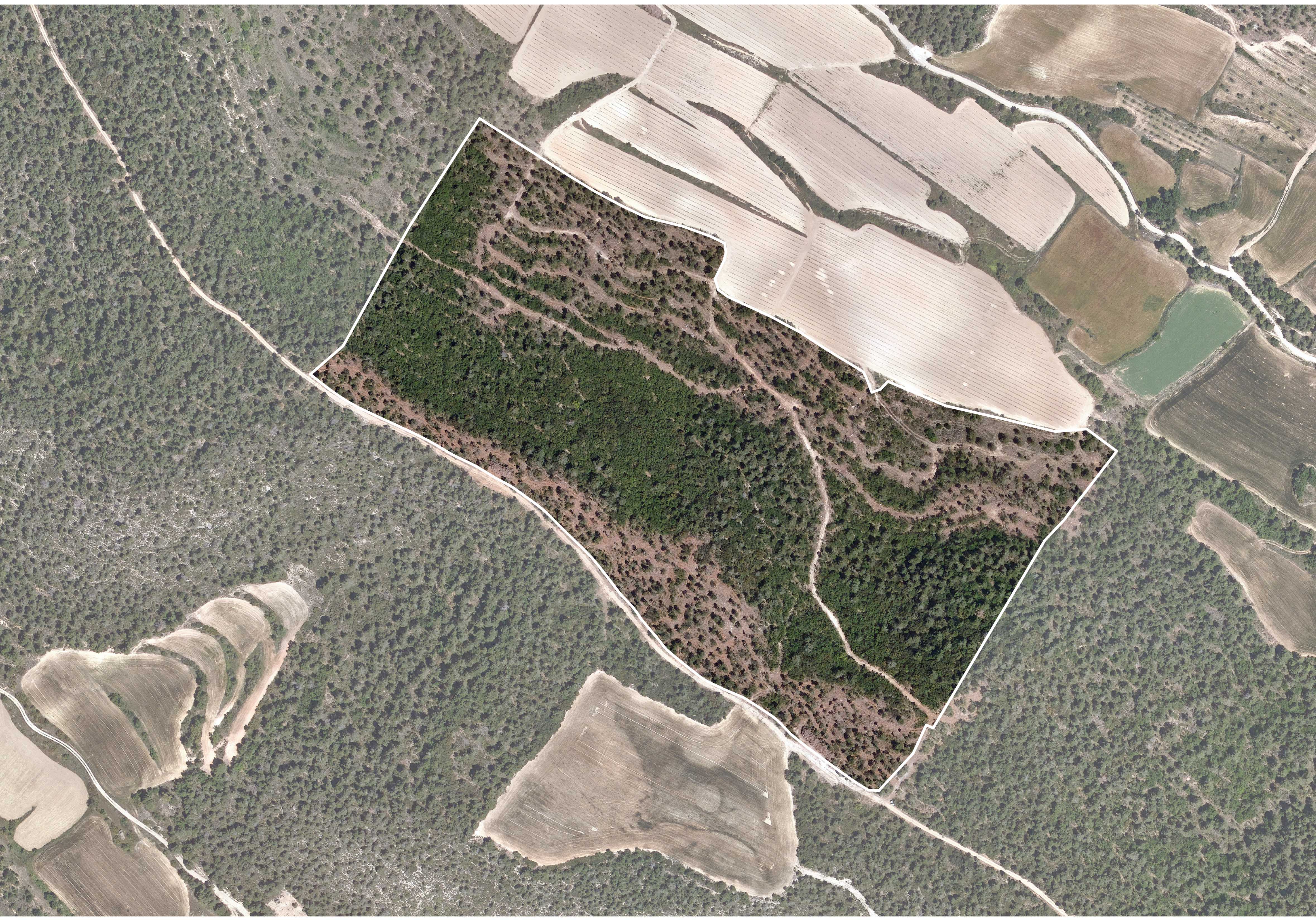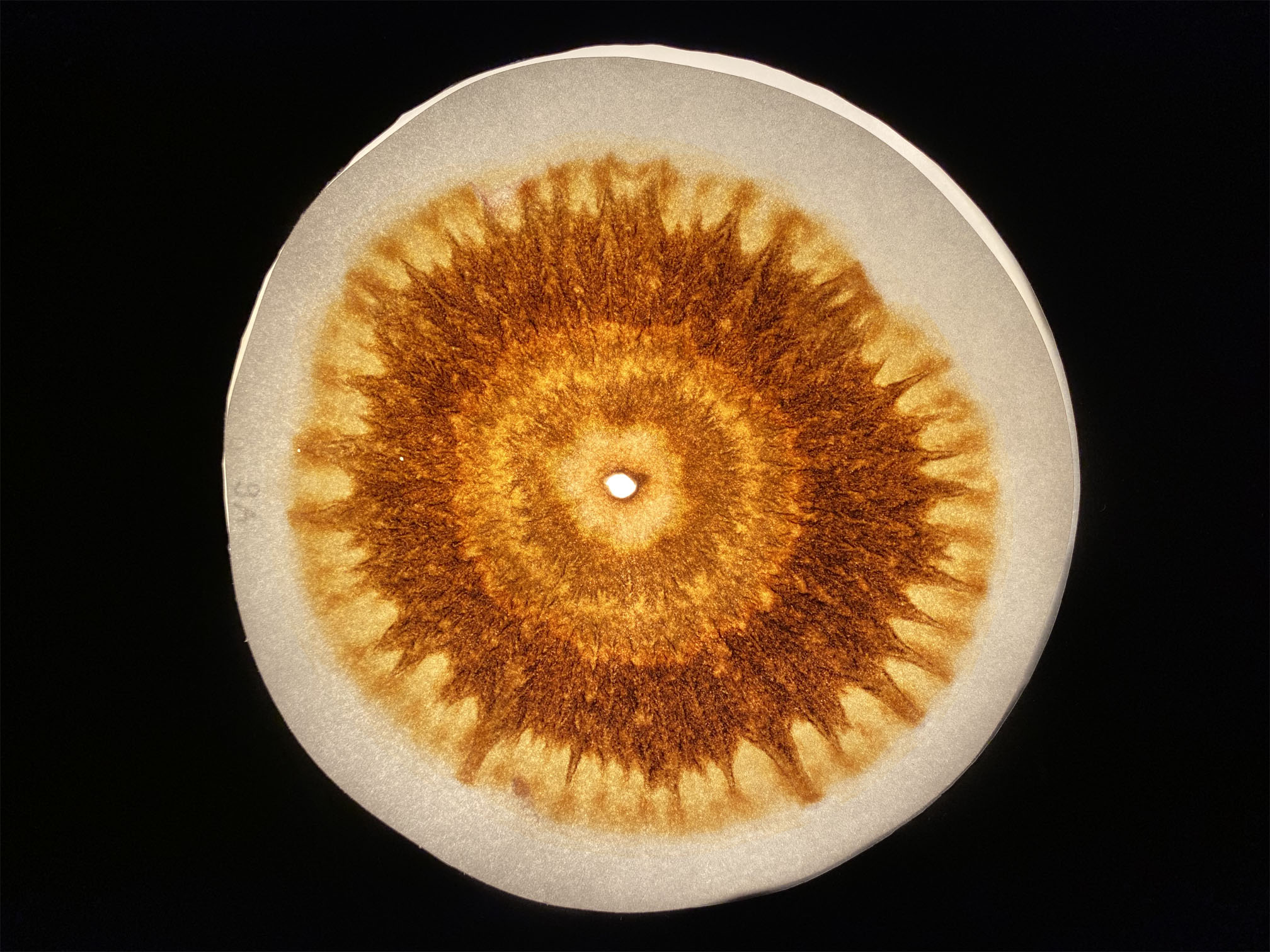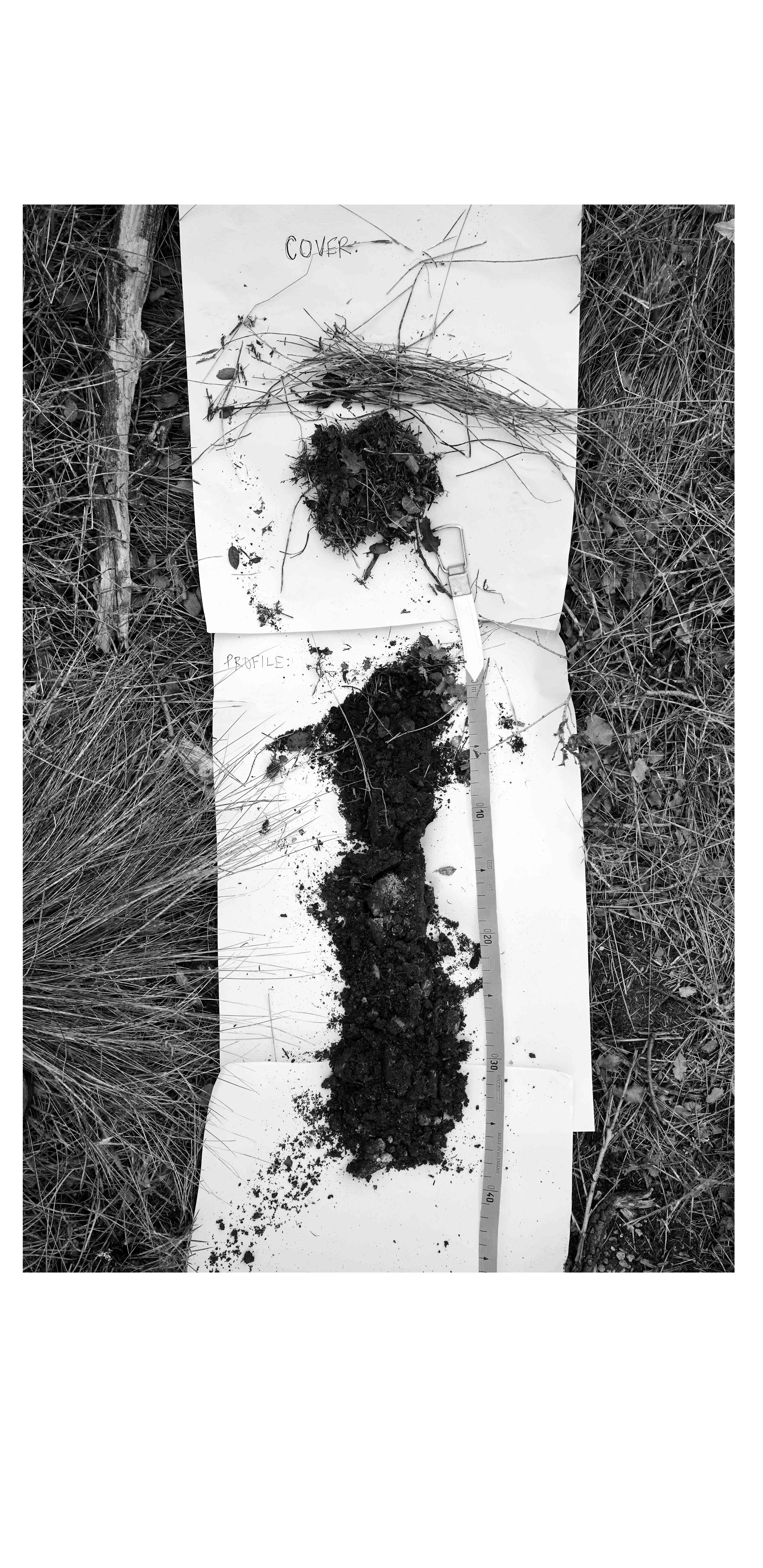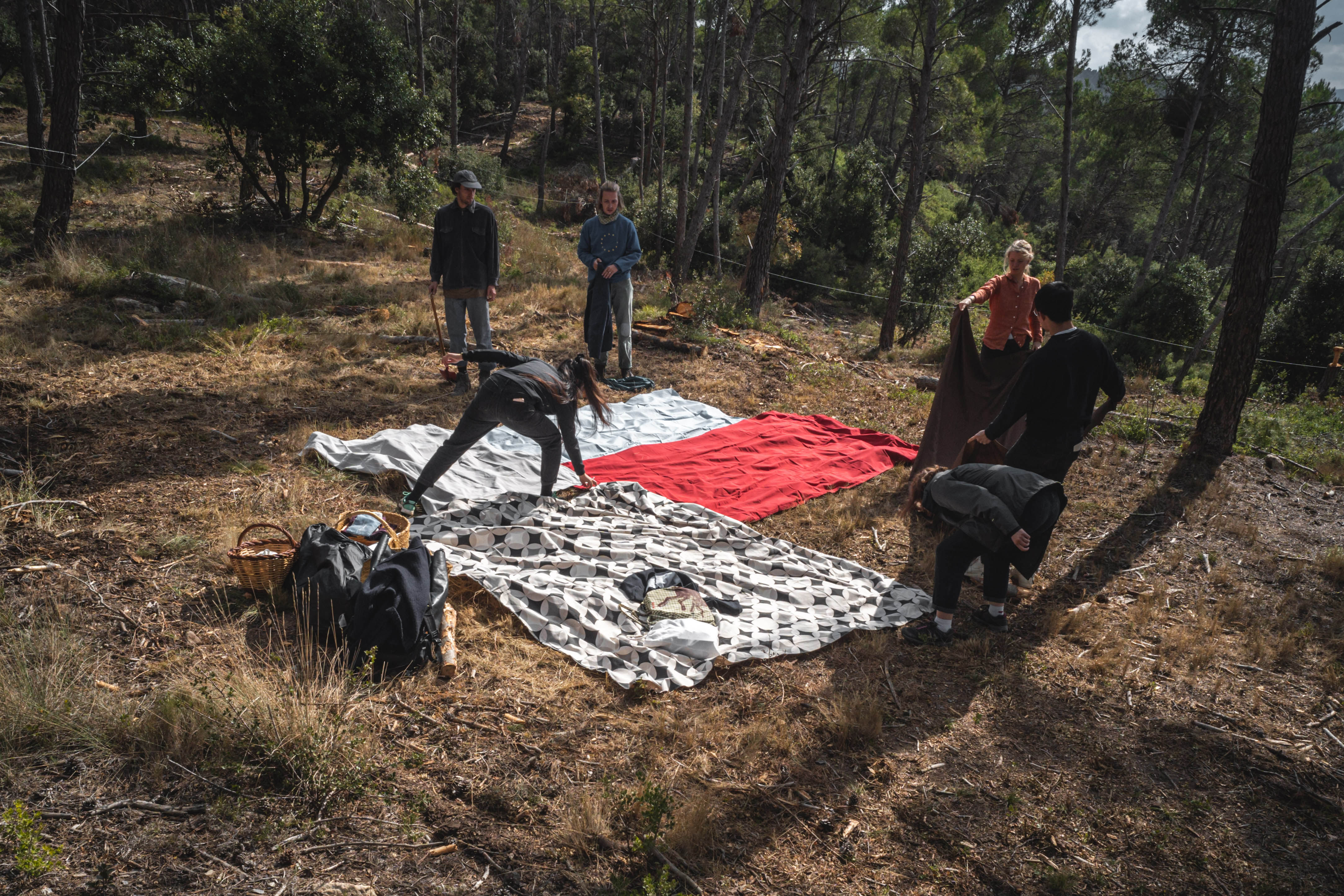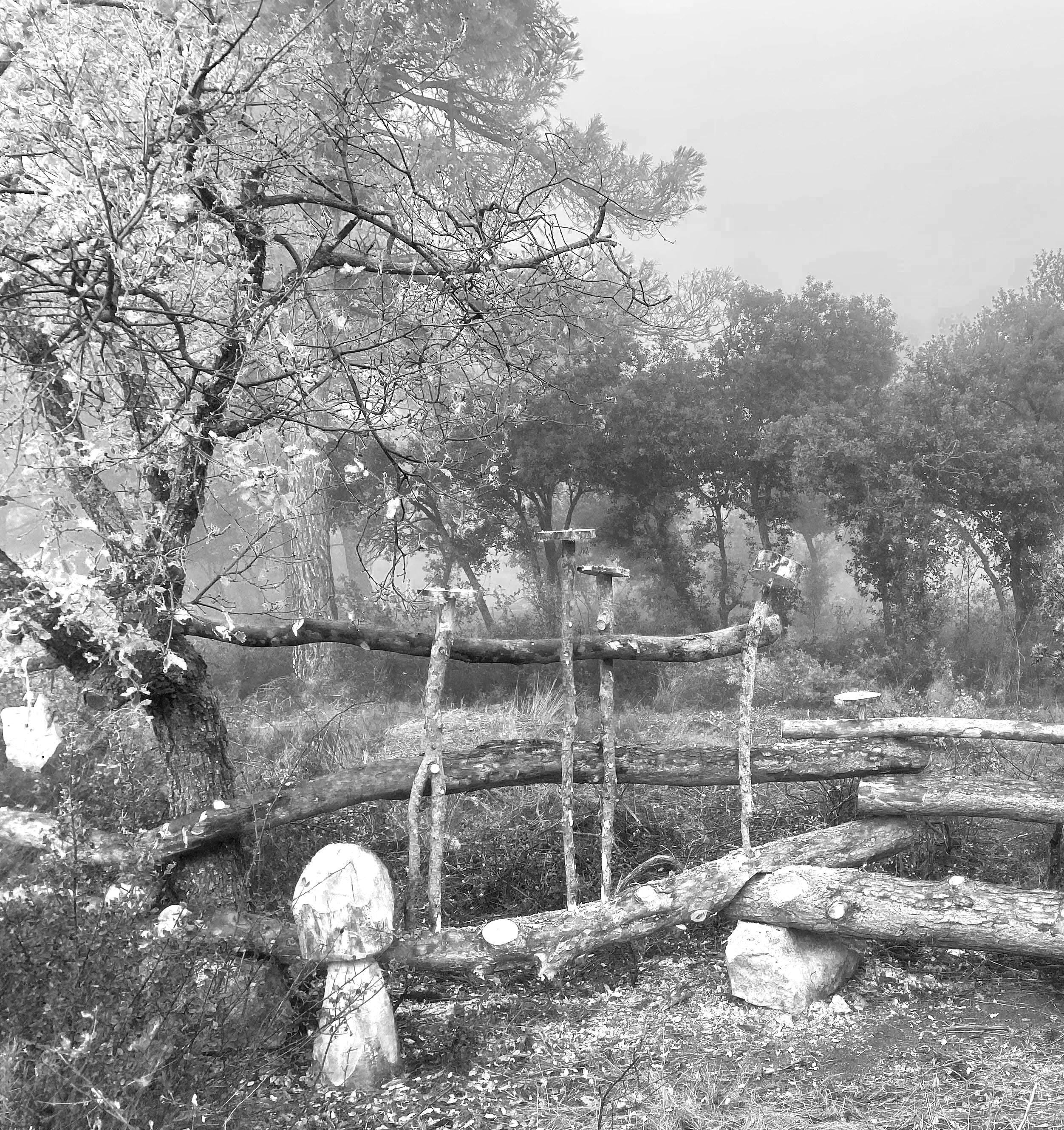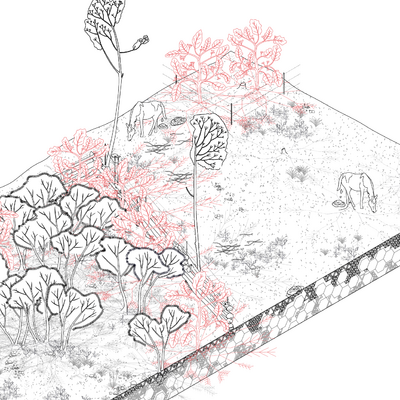
Oak Grove Jardinet | Pla del Mut
This Jardinet is located in the Pla del Mut Up Garden facing the road that follows the ridge. The center of the space is a dense grove of even-aged evergreen Holly Oaks (Quercus ilex) that form a dense shade. We believe that these trees have regrown after being cut back in a form of coppice, so several of the closely-spaced trunks likely share a root system. Around the oaks are several pine trees (Pinus halepensis) that are near the end of their capacity for further growth. The oaks, on the other hand, appear vigorous, and will likely continue to grow. In the drawing, these trees are depicted using the drawing language developed by the Chair of Being Alive that indicates the life stage of the tree following the classification of Christophe Drénou, so it is possible to quickly understand the differing growth potentials of these two species in this context.
The soil, which is best described as a Morull, is shallow, and the rocks are close to the surface. The groundplane is composed of a mix of bare ground (especially in the dense share of the oaks), the spreading Quercus coccifera and a mix of Brachypodium spp. and Carex spp.. This community is typical of the site, and, since this area will not be grazed by the horses, we expect that the existing plants will persist. The axonometric drawing above shows the existing condition, first with the vegetation and then just the roots of the trees. The organic humus layer and shallow, rocky soil is apparent in section.
The design of the Jardinet is simple; the wood fence constructed material found onsite encircles the grove of oak trees. Where the fence borders plots that are grazed by the horses, it is planted with drought adapted fruit trees and shrubs that we expect to benefit from the increased soil fertility and water holding capacity. We will also add plants that provide late and early season nectar for pollinators. Subtle modifications to the ground improve access while protecting the existing vegetation. Over time, additional elements will be added as needed to make the space comfortable for visitors.




